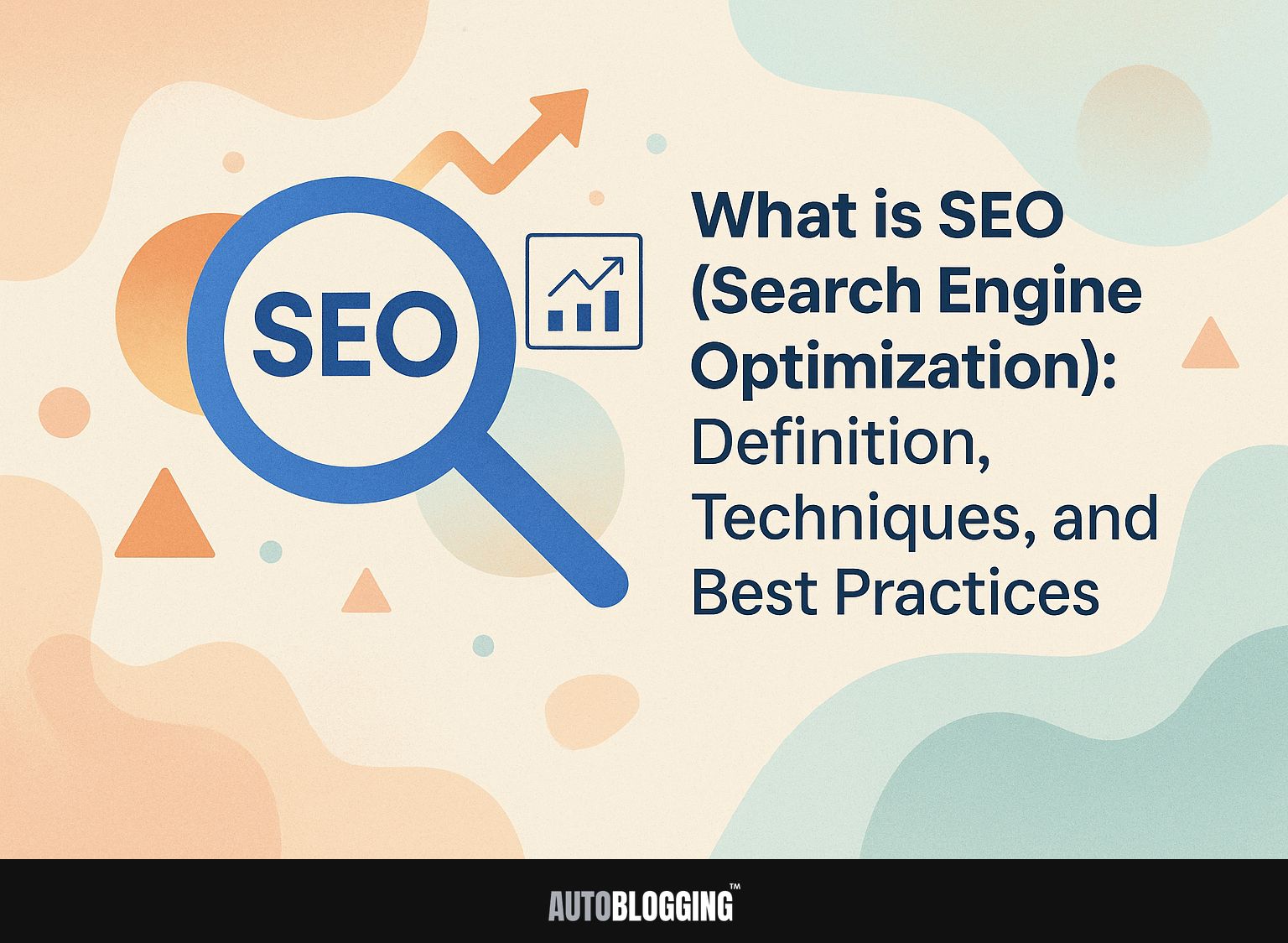
Improve your website’s performance with effective search engine optimization (SEO). This important approach involves creating content that is both useful and credible to draw visitors and increase website traffic. In this article, we’ll explain what SEO is, look at important methods, and share tips to improve your web content for greater visibility. Find out how developing your SEO abilities can make your website more visible online and get more people interacting with your content.
Key Takeaways:
- SEO, or Search Engine Optimization, involves improving a website so it appears higher on search engine results pages.
- There are three main types of SEO: on-page, off-page, and technical. Each type requires different techniques for effective optimization.
- Some key SEO techniques include keyword research, content optimization, and link building. Make sure to follow best practices like producing good content, making your site work well on phones, and making your pages load faster.
Contents
1. Importance of SEO
SEO can increase website traffic by up to 50% in six months when done correctly, making it a good option for businesses.
To achieve this, focus on three essential strategies: keyword research, on-page optimization, and link building.
- Start with tools like Google Keyword Planner to identify high-traffic keywords relevant to your niche. Then, improve your website content by adding these keywords to titles, headers, and meta descriptions.
- For link building, consider guest posting on reputable industry blogs or using platforms like HARO to gain high-quality backlinks. These basic steps can greatly improve your search engine visibility and natural reach over time.
2. Brief History of SEO
SEO has changed a lot since the late 1990s, keeping up with the updates in search engine algorithms like Google’s. An important change happened in 1998 when Google introduced PageRank, which changed the way websites were ranked, using backlinks to determine their importance.
In 2003, the introduction of the Florida update shifted focus to content quality, while 2011’s Panda update penalized thin content.
Fast forward to 2015, when the mobile-friendly update emphasized responsiveness, reflecting users’ increasing reliance on mobile devices. These milestones have influenced current practices, leading marketers to focus on high-quality, mobile-friendly content and user experience as key parts of successful SEO strategies.
As mentioned in our exploration of user experience best practices, enhancing UX is integral to adapting to these evolving trends.
What is SEO?
SEO, or search engine optimization, is the process of improving a website’s presence in search engine results pages (SERPs). Using alt tags and EXIF data can be an effective strategy for enhancing your SEO efforts.
1. Definition of SEO
SEO includes methods to improve content quality and relevance to make a website more visible in search results.
Key components of SEO include:
- Keyword optimization
- Backlinks
- User engagement
Keyword optimization involves researching and integrating terms users search for, ensuring they appear naturally in your content.
For backlinks, focus on building relationships with authoritative sites; tools like Ahrefs can help identify opportunities for guest posts or collaborations.
Improve user engagement with clear calls-to-action and interactive content like quizzes or polls that can keep visitors on your site longer. These combined strategies improve your site’s relevance to search engines.
2. How Search Engines Work
Search engines use complex algorithms to evaluate and rank web pages, with crawlers acting as the gatekeepers of this process.
Crawlers index content by following links and gathering relevant information from each page. Factors influencing ranking include keyword usage, site authority, page load speed, and mobile optimization.
Tools such as Google’s PageSpeed Insights can analyze your webpage’s performance and provide tips for enhancement. Using structured data markup improves the detail of search results.
Using tools like Ahrefs or SEMrush to track your site’s backlinks helps improve its authority and trust, which is important for higher rankings. Keep in mind that continuous updates and adjustments are necessary to maintain a strong online presence.
Types of SEO
Different types of SEO focus on different parts of a website’s performance and visibility, each being important in the overall plan. For those interested in enhancing local search engine presence, consider exploring strategies detailed in our deep dive into the benefits and strategies of Local SEO.
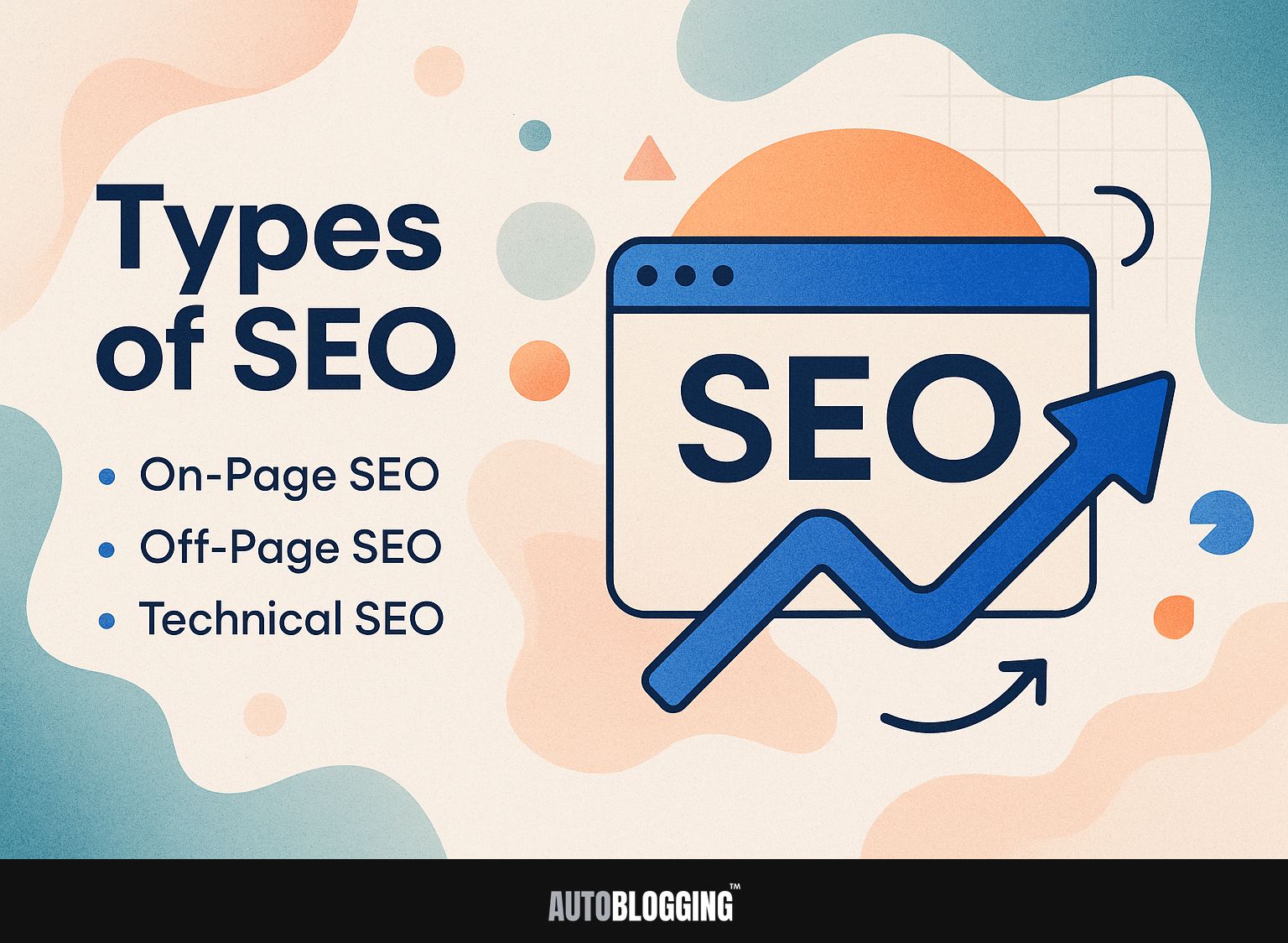
1. On-Page SEO
On-page SEO works on improving each web page so it appears higher in search results and attracts more suitable visitors.
- To improve your on-page SEO, begin by adjusting title tags. Make sure they contain main keywords and are less than 60 characters long.
- Next, use header tags (H1, H2, H3) to organize content clearly and make it easier to read. Make sure your main keyword appears in at least one header.
- Change to URLs that clearly describe the content. Regularly check important items like meta descriptions (best at 150-160 characters) and image alt text, adding keywords while keeping it easy for users to read.
These techniques collectively strengthen your page’s visibility and engagement.
2. Off-Page SEO
Off-page SEO involves actions taken outside of your own website to impact your rankings within search engine results.
An important part of off-page SEO is link building, which strengthens your site’s credibility. Writing guest posts lets you share useful information on other websites and get links back to your own site.
Tools like Ahrefs and SEMrush are very important for keeping an eye on your backlinks; they show you what is working well and what needs improvement in your link-building plan.
Think about using social media by posting new content on Twitter and LinkedIn. This can bring more visitors to your site and help people find it more easily, which can help your SEO.
3. Technical SEO
Technical SEO makes sure a website works with current search engines, helping them find and organize the site’s pages.
- To implement effective technical SEO, start by improving your website structure. Organize content into categories and use clear URLs.
- Next, create an XML sitemap with tools like Yoast SEO for WordPress or Screaming Frog, so search engines can find your pages easily.
- Make sure your website works well on mobile devices; you can use Google’s Mobile-Friendly Test tool to check how it performs.
- Regularly check how your site is doing with Google Search Console to find problems and follow progress, keeping your site well-suited for users and search engines.
Key SEO Techniques
Using effective SEO methods, including optimizing title tags for better visibility, can greatly improve a website’s visibility and increase user interaction.
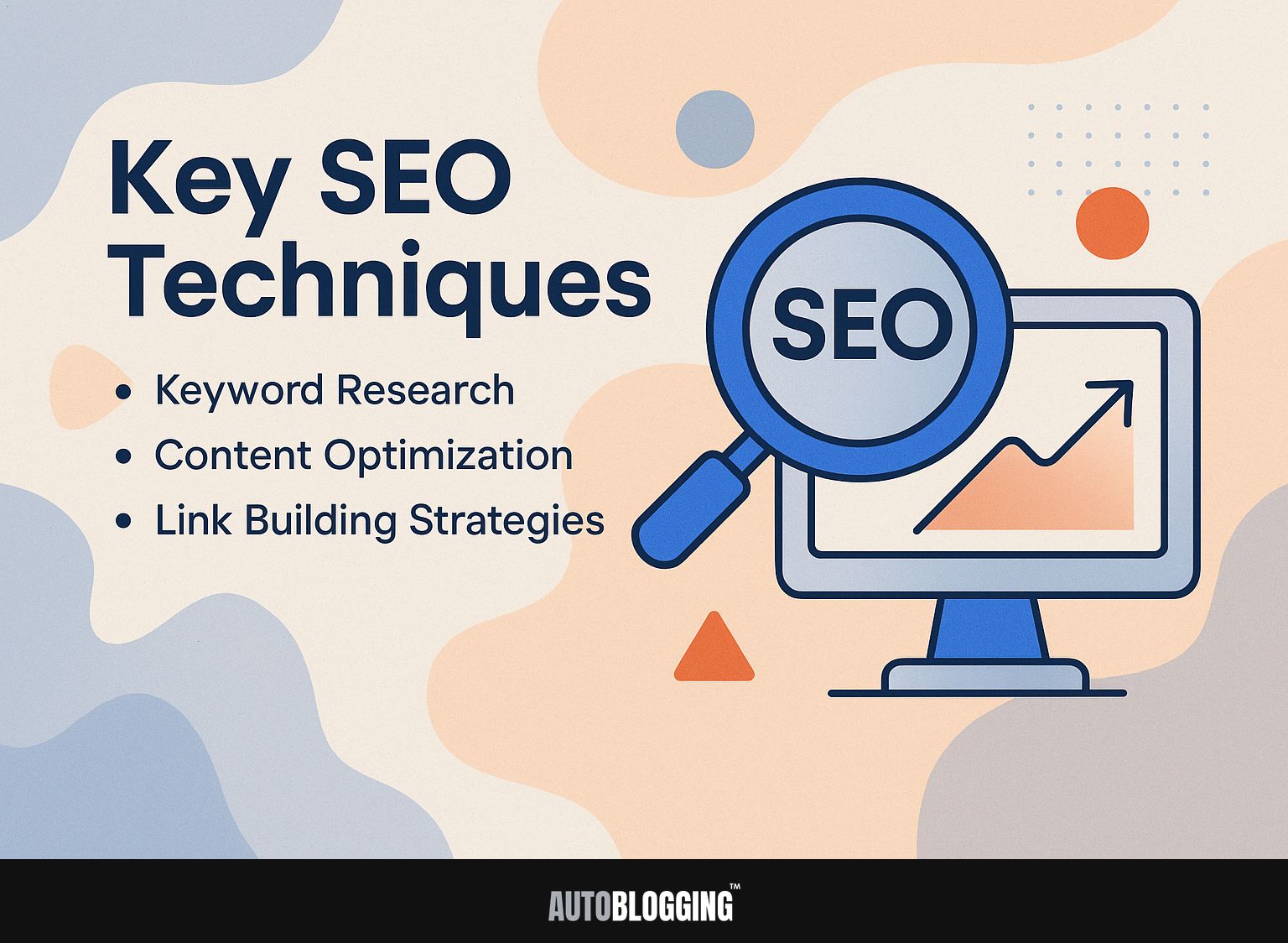
1. Keyword Research
Keyword research is the foundation of SEO, helping identify the phrases that potential customers are searching for online.
To do useful keyword research, begin by using tools such as SEMrush and Ahrefs. Both platforms allow you to enter seed keywords related to your niche, revealing long-tail keywords with high search intent.
For example, if you enter “organic skincare,” you might find keywords like “best organic skincare for acne” or “organic skincare routine for oily skin.” Focus on keywords that have a good search volume but low competition, as this is where you’ll find the best chances to drive traffic to your site.
2. Content Optimization
Improving content involves changing text, images, and layout to satisfy both user needs and search engine rules.
To begin, concentrate on using related keywords with Latent Semantic Indexing (LSI) to help search engines understand your content. Use tools like Ubersuggest or Google Keyword Planner to find similar words.
Also, think about improving your chances of appearing in featured snippets by organizing your content with clear headings and bullet points. This helps make your content more noticeable in search results.
For instance, compare your original text with a revised version: before, it might read convoluted; after implementation, it becomes concise and visually appealing. This adjustment improves both reader engagement and SEO performance.
3. Link Building Strategies
Effective link building methods are key to increasing website credibility and improving search engine rankings.
Some impactful methods include guest blogging, where you write articles for popular sites in your niche, thus earning backlinks. For example, contributing to a leading marketing blog can generate significant referral traffic.
Another method is broken link building; find broken links on authoritative sites and suggest your content as a replacement. Tools like Ahrefs can aid in identifying these links.
Forging relationships with authoritative websites can lead to organic link opportunities. These strategies can result in a 20-30% increase in referral traffic within a few months.
Best Practices for SEO
Using best practices in SEO makes sure your strategies work well and last over time.
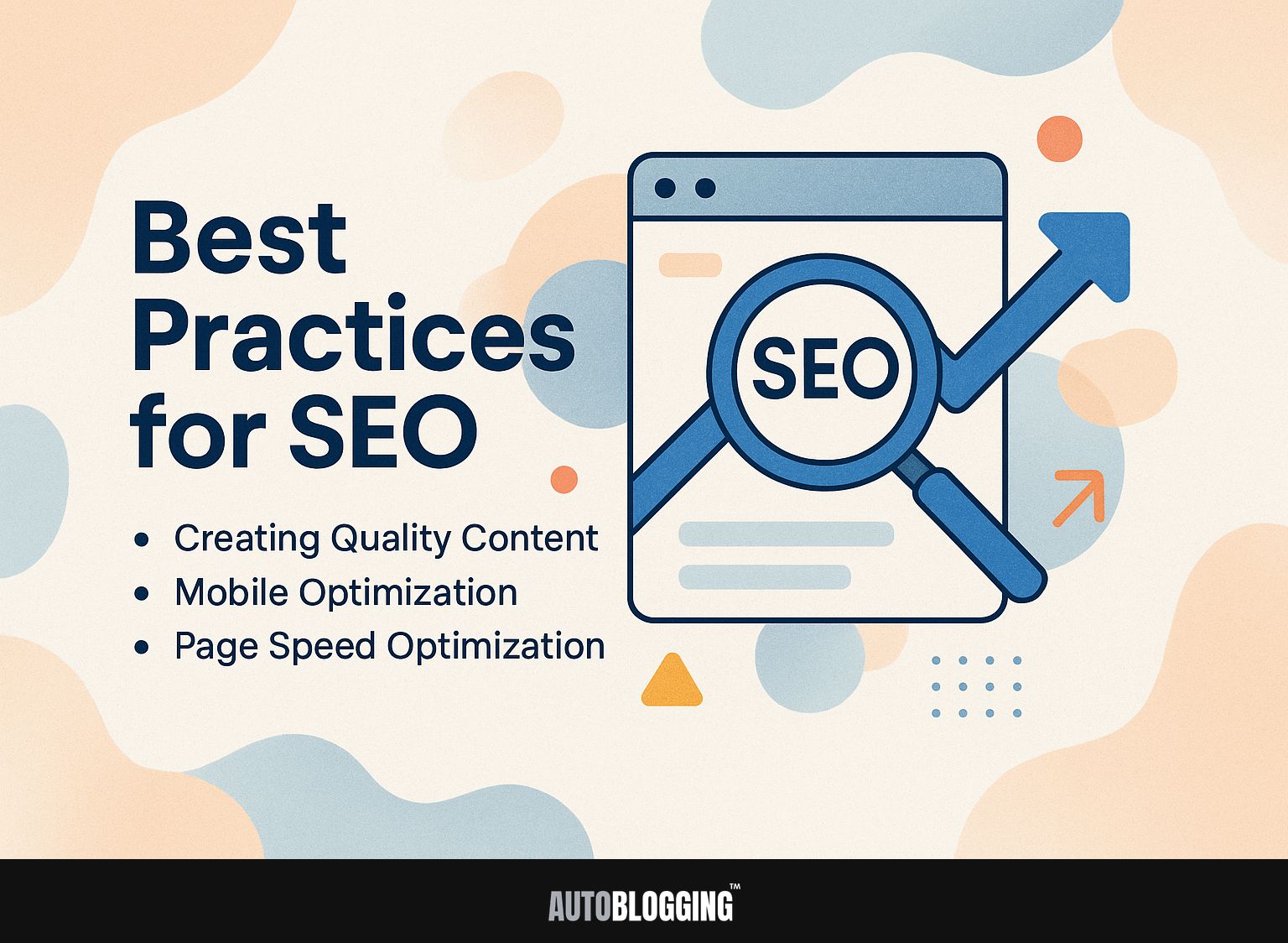
1. Creating Quality Content
Creating high-quality content that addresses user needs is fundamental to achieving top rankings in search results.
To keep your content original and relevant, regularly update your topics based on current trends and user feedback.
Use tools like Google Trends to find well-liked words in your area, and create notifications for news in your field to keep your content current.
Think about using your current content in different ways; for instance, turn a well-liked blog post into a video or podcast episode.
Using polls and social media to connect with your audience can give you useful information, helping you create content that connects with them and encourages more interaction.
2. Mobile Optimization
With over 50% of global web traffic coming from mobile devices, mobile optimization is critical for SEO success.
To make your website work well for mobile users, start by using a design that changes to fit any screen size.
Use tools like Google’s Mobile-Friendly Test to find parts that need fixing. Focus on fast loading times; aim for a load time of fewer than three seconds by compressing images and minifying code.
Use a hamburger menu to save screen space and keep the app easy to use.
By focusing on these aspects, you’ll improve user experience and increase your site’s position in search engine results.
3. Page Speed Optimization
Page speed is a significant ranking factor in SEO, with research indicating that a one-second delay in loading can decrease conversions by 7%.
To speed up your website, start by reducing the size of images using tools like TinyPNG or ImageOptim. This cuts down file sizes while keeping them clear.
Next, enable browser caching through your site’s.htaccess file or use plugins like WP Super Cache if you’re on WordPress. Use a Content Delivery Network (CDN) like Cloudflare to quickly share your site’s content.
Use GTmetrix or Google PageSpeed Insights to see how fast your website loads. Find ways to make your site load faster and hold the attention of your visitors.
SEO Tools and Resources
Different SEO tools help marketers improve their websites and monitor results.
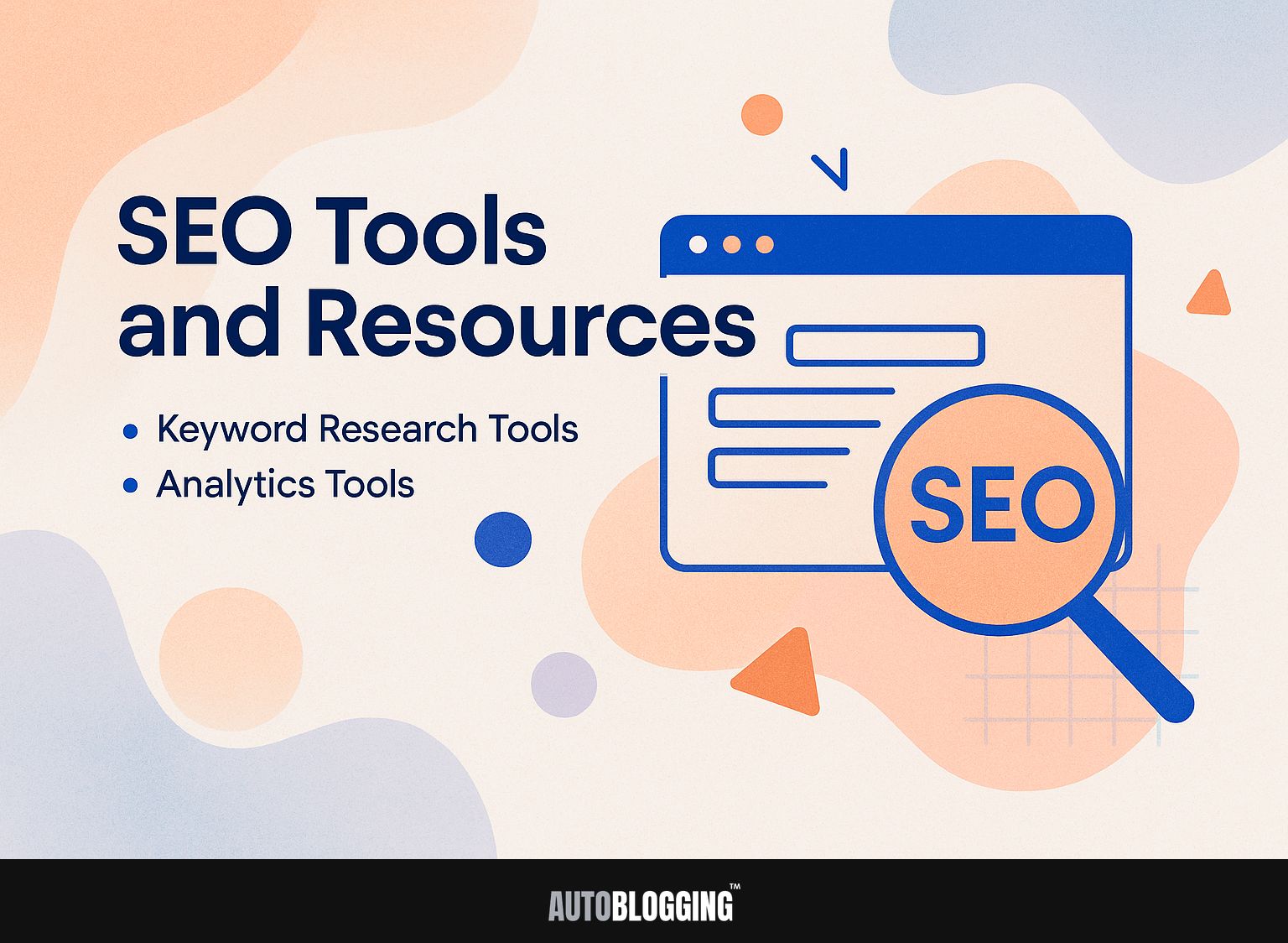
1. Keyword Research Tools
Tools such as Google Keyword Planner and Moz Keyword Explorer are essential for identifying helpful keyword choices.
For a well-rounded approach, consider tools like Ahrefs, SEMrush, and Ubersuggest alongside these options. Ahrefs ($99/month) provides detailed backlink analysis, useful for identifying promising keywords.
SEMrush ($119.95/month) includes a powerful keyword magic tool, ideal for creating large keyword lists from a single starter keyword.
Ubersuggest (free with paid plans at $12/month) provides SEO tips for those new to it. Choose based on your budget and specific needs, such as single-project analysis or broad competitive research.
2. Analytics Tools
Analytics tools like Google Analytics and SEMrush give important information about how websites are performing and how users are interacting with them.
To maximize the effectiveness of these tools, start by tracking key metrics like website traffic, bounce rates, and user behavior.
For example, use Google Analytics to set up customized dashboards that display user information and traffic sources. This allows you to identify which channels bring in the most engaged visitors.
Meanwhile, SEMrush can help you analyze organic search performance, revealing keywords that drive traffic.
Regularly review this data to make informed choices on content strategy and SEO improvements, which will improve overall user experience and site performance.
Common SEO Mistakes
It’s important to steer clear of frequent SEO errors to keep your site visible and running well. If interested in optimizing your site further, you might find our guide on meta tags insightful for understanding their types and SEO impact.
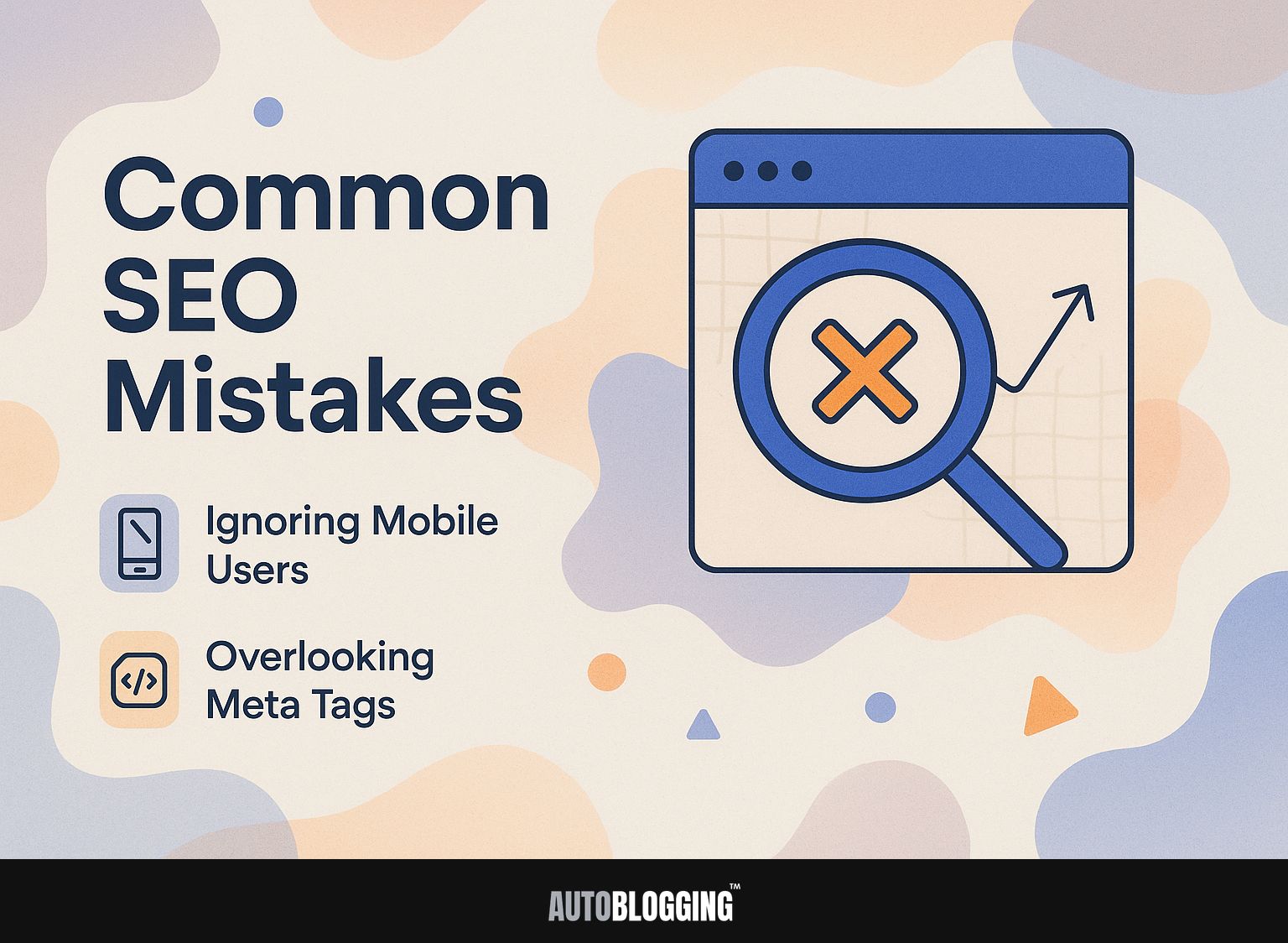
1. Ignoring Mobile Users
Not considering mobile users can greatly reduce a website’s audience, since more than half of internet use is on mobile devices.
To improve mobile performance, consider using these strategies:
- Use responsive design to make sure your site works well on different screen sizes;
- Compress images for faster loading times;
- Make it easier for users to move through the site.
Google PageSpeed Insights can identify and resolve issues that make a website load slowly. Testing different layouts can show which features work best for mobile users.
By prioritizing these tactics, you’ll significantly improve user experience and likely increase traffic, conversion rates, and overall engagement.
2. Overlooking Meta Tags
Overlooking meta tags can significantly reduce a site’s ability to rank well and attract organic traffic.
Title tags and meta descriptions are important for SEO because they directly affect the number of clicks a website gets.
An improved title tag such as “Top 10 Tips for Effective SEO Strategies” clearly shows what the content offers, whereas a simple tag like “SEO” is vague.
A catchy meta description, like “Learn key tactics to improve your website’s search engine ranking and bring in more visitors,” makes users more likely to click.
Tools like Yoast SEO help you apply these tags effortlessly, providing guidance to make your meta tags clear and engaging.
Frequently Asked Questions
1. What is SEO?
Search Engine Optimization, known as SEO, involves making changes to a website to increase how often it appears and how high it ranks on search engine results pages. It involves using various techniques and best practices to increase the quality and quantity of website traffic from search engines.
2. What is the definition of SEO?
SEO means making changes to a website to help it show up higher on search engine results pages. This includes on-page and off-page techniques, as well as following industry best practices to increase website traffic from search engines.
3. What are the techniques used in SEO?
There are various techniques used in SEO, including keyword research, on-page optimization (such as meta tags, headings, and internal linking), off-page optimization (building backlinks and social media marketing), and technical optimization (such as site speed and mobile responsiveness).
4. What are the best practices for SEO?
Some good methods for SEO are creating excellent and useful content, improving the website layout and ease of use, adding alt tags to images, frequently updating the content, and making sure the design works well on mobile devices. Other best practices include building quality backlinks and utilizing social media for promotion and engagement.
5. Is SEO important for my website?
Yes, SEO is essential for any website looking to increase its visibility and attract more organic traffic. Using SEO methods and following recommended guidelines can improve your website’s position on search engine result pages. This helps potential customers find and visit your site more easily.
6. Does SEO guarantee top rankings on search engines?
No, SEO does not guarantee top rankings on search engines. While implementing SEO techniques and following best practices can improve your website’s visibility and ranking, there are many factors that contribute to search engine rankings. You should frequently look over and change your SEO plan to keep up with the constant updates in search engine algorithms.
